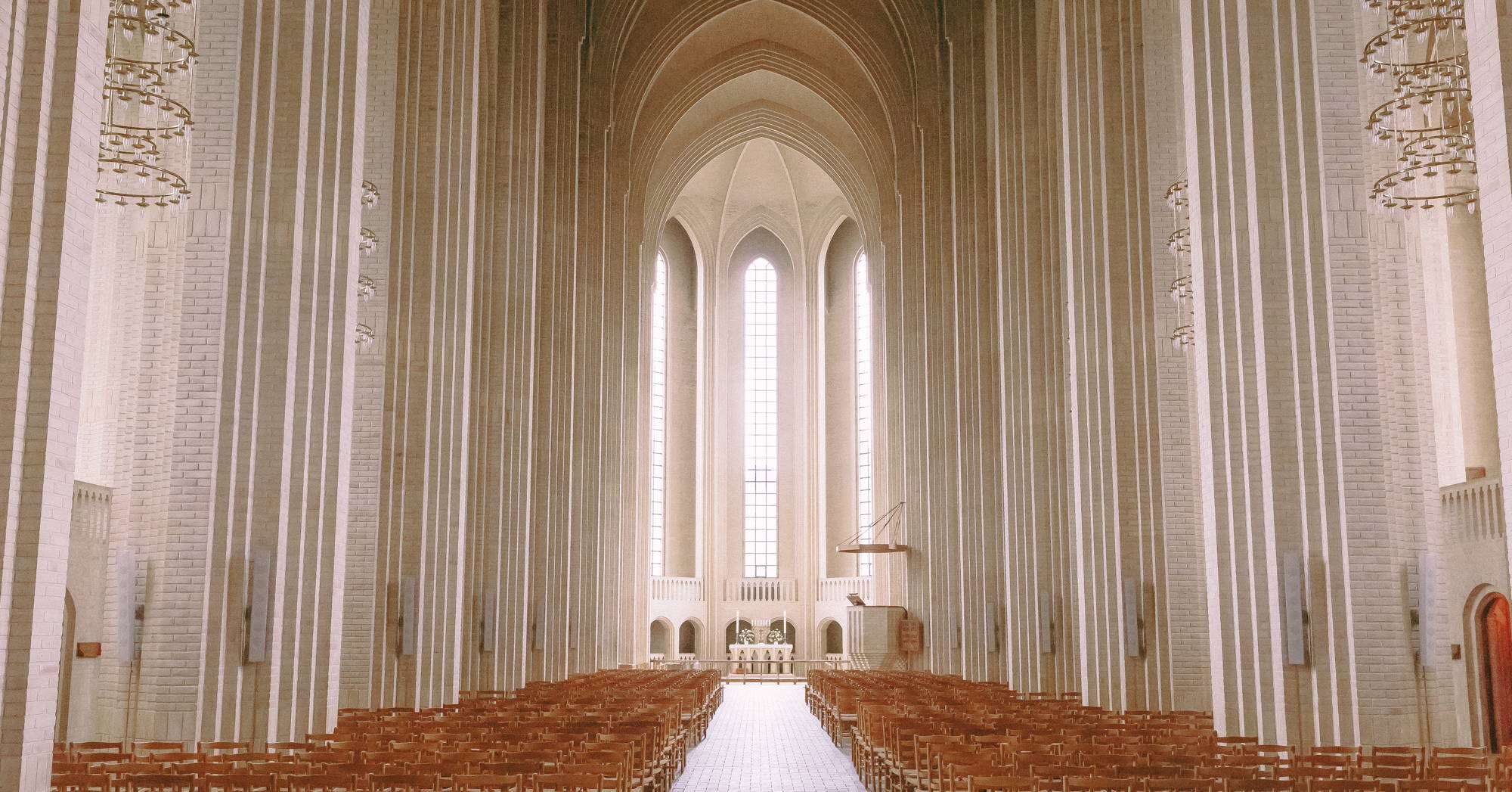The monumental church, constructed by Peder Vilhelm Jensen-Klint in Copenhagen—in honor of N. F. S. Grundtvig.
In a quaint neighborhood, on the outskirts of Copenhagen, stands Grundtvig's Church. Grayish, yellow bricks refract a soft light throughout the space. A large pipe organ hugs the back wall. Candles are lit. The space is sacred—a place to worship and experience God.
Grundtvig's Church was constructed to commemorate Danish priest, philosopher, and poet N. F. S. Grundtvig (1783-1872). His work in education and Christian theology made him a significant figure in Danish history. More prominent Danish theologians, Kierggakard and Hegel, note Grundtvig as a key influence on their writings.
Central to Grundtvig's beliefs was the notion that Christianity is best understood in community and congregation with others, through "the liveliness to talk with really enlightened people, who would…show [you] how human life appears when the light shines upon it.” Perhaps for these reason, Grundtvig always favored calling himself a pastor over theologian.
Upon his death, Grundtvig's church was constructed by Danish architect, Peder Vilhelm Jensen-Klint. Several months were spent preparing—Jensen-Klint particularly looked at Danish village churches on the island of Zealand for inspiration. Through it, a synthesis of styles emerged—medieval history, gothic architecture, and brick expressionism—to create a structure completely new.
Unlike many cathedrals, Grundtvig's church is not adorned with crosses, religious symbols, gospels, or books. Other than chairs, a few light fixtures, and candles, the space is rather sparse. Yet, one cannot help but find walking into the space a spiritual experience. Like many other buildings at the intersection of intentional design and spirituality, visitors and locals, Christian and non-religious alike, step inside to take in the awe of its construction. It is an example of beauty, faith, and creativity—and it is good. Amen.
Words and Photos—Bryan Ye-Chung



